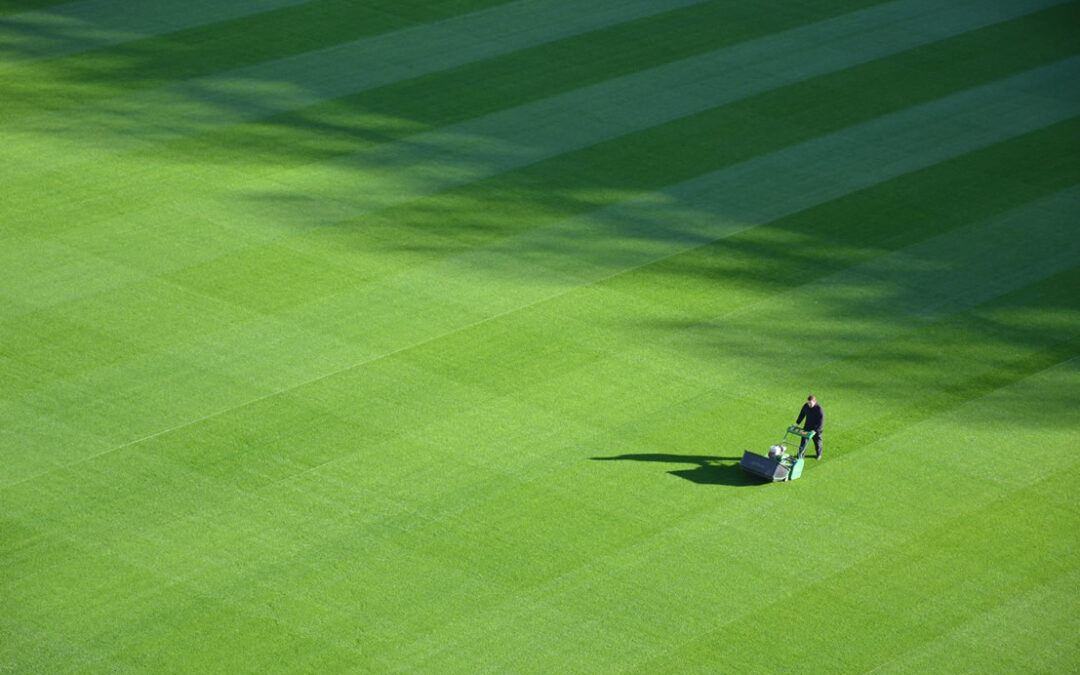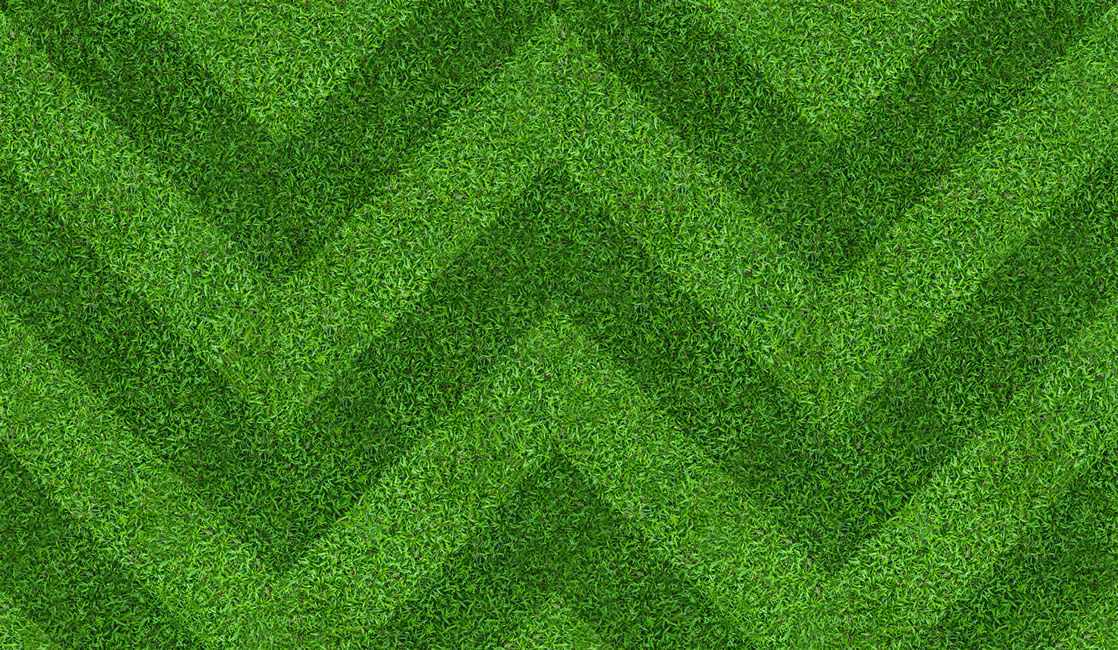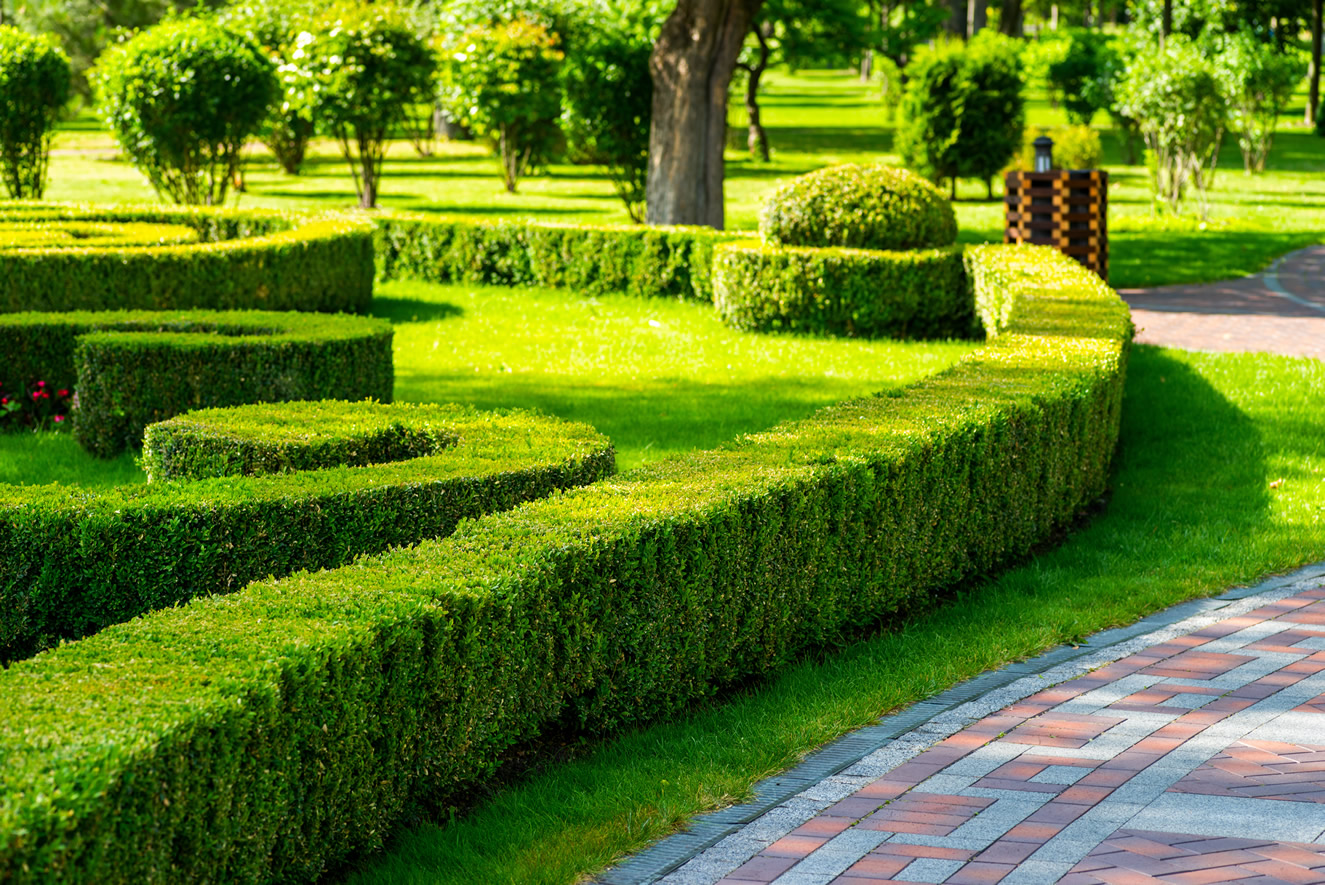A plain garden has an appeal of its own. You can add visual variation with flower beds, shrubs, and hardscaping features. However, there is a way to elevate lawn aesthetics: grass patterns. Creating a grass pattern not only makes your lawn striking. These designs can also breathe new life into outdoor spaces and make you the talk of the neighborhood. Plus, varying patterns can also contribute to the overall health of the grass.
At MowTown Blades, we’ve shared some eye-catching designs you can try to incorporate. These range from basic stripes to something as grandeur as a circular maze. Whether you have a small lawn or a large space, you’ll find options to try. Keep reading to learn more.
Simple Elegance with Basic Stripes
Homeowners and contractors who are just beginning to foray into lawn design will find the basic stripes as the easiest pattern. The stripe doesn’t take a lot of technical skill to do. You just need to have an eye for a straight edge. If you don’t, you can use a roller attachment. This tool goes on the back of your mower and helps you achieve clean stripe by bending grass down in a certain direction, which affects how the blades reflect light.
When you start making stripes, start on your lawn’s perimeter. From here, you need to create a clean edge. This will serve as the foundation or guide for the rest of the stripes. You can also cut in different directions, like diagonals. Just make sure that each line is parallel with the rest for that uniform look. To make the job easier you can purchase a lawn striping kit.
Add a Gentle Look with Soft Waves
A soft wave pattern is ideal for grasses with taller heights. When the wind blows, the waving grasses, and their undulating pattern create a whimsical feel. With this grass pattern, you can achieve a softer look for your outdoor area.
To create a wave pattern, follow the same principle as basic stripes. The difference is that you’ll have to follow curved lines instead of a straight edge. It will take more deliberate work to achieve a uniform wave pattern, so be patient when trying this design. Mow the grass slowly and stay consistent to avoid a pattern that looks messy.
Try a Classic Checkerboard Design
A checkerboard design mimics the look of a chessboard, with dark and light squares. This looks creates a classic and appealing design. You’ll have a lawn that looks elegant. The uniform squares also add symmetry and a sense of balance.
Checkerboard designs use the basic stripes as a foundation. Use the technique we mentioned above to start. Then, turn 90 degrees and do another set of stripes. These should be perfectly perpendicular to the first stripes to get squares. To achieve diamond shapes, you can create stripes that meet at an angle other than 90 degrees. Take your time when making your turns. That way, you can achieve more uniform patterns.
Get a Modern Look with a Crosshatch or Plaid Pattern
The key difference between a checkerboard and a plaid or crosshatch pattern is in the number of colors. The former is black and white. In the case of lawns, a checkerboard design has dark and light shades of green. On the other hand, a plaid pattern has more than just two colors or shades. It takes a bit more effort to achieve the plaid pattern.
To achieve the plaid or crosshatch pattern, you need to start with a checkerboard design as your foundation. For each second stripe, you’re going to mow in reverse instead of turning. This creates variations in grass shades. To make the effect even more pronounced, try using a roller or stripping kit. These tools bend down the blades, creating even more dramatic shade differences.
Achieve a Dynamic Look with a Zig-Zag Design
The zig-zag design is the close cousin of the soft waves. However, instead of a gentle pattern, you get sharp and dynamic lines. The look offers a modern, more energetic feel to your lawn. In addition, there’s a sense of movement that shies away from the rigidness of stripes or plaid patterns. When done right, the zig-zag pattern can create varying shades of green in a single area depending on where the person views your lawn.
Designing the zig-zag pattern takes the same cues as the soft wave patterns. However, you make straight diagonal lines instead of curves. Alternate between left and right to create the signature zig-zag pattern. You can experiment with the frequency of the zigzag based on the look you want to achieve. Another way to add variation is with the intensity of the pattern. An understated design gives a more subtle look, while a bold zig-zag pattern makes a statement.
Add Emphasis with Circles or Spirals
Circles and spirals are often used to emphasize certain features of a lawn. You can use these patterns near trees or flower beds, creating a radiating effect. This look makes spirals and circles popular for those who want an alive and energetic feel to their lawn. Those who have large enough space can use both straight stripes and circles in different areas, giving a more dynamic look.
Making circular and spiral patterns is like the basic stripe. However, you’ll follow wide arcs instead of straight lines. Cut in different directions for every alternating arc to create shade variations. The key is to use the right mower blade and roller attachment.
Turn Your Lawn into a Circular Lawn Maze
If you have enough space and lots of time for maintenance work, you can create a circular lawn maze. This design takes more effort, especially when growing the hedges and appropriate grasses. However, the resulting look is playful yet elegant at the same time. You’ll have a focal point for your lawn as well as an artistic feature.
When creating a maze pattern, you may need to work with a landscaping professional. They can help you design the pattern and ensure that the growing hedges will follow the plans. The design doesn’t have to be a full-on maze. It can follow the pattern of one, with the grass growing up to a only certain height to accomplish the effect.
Wrapping Up: Grass Patterns for a Beautiful Lawn
You don’t have to settle for a plain lawn. Add more visual interest and appeal by creating designs such as stripes, spirals, and plaid patterns. We recommend using the right mower blades and rollers to ensure uniform and consistent designs.
To find the right mower blades for your grass type, check out MowTown Blade collection!
FAQs
What Tools Should I Use to Create Grass Patterns?
A mower is the most basic tool you need to have. You should also get the right type of blade to ensure uniform grass height. Then, we recommend getting a stripping kit and a roller. These tools bend the grass blades to create shade variations. This process helps make the patterns more pronounced.
What Are the Different Types of Patterns I Can Use?
The most basic grass pattern is the stripe, and it serves as a foundation for all the rest. You can use perpendicular stripes to create checkerboard and plaid patterns. Curving stripes are ideal for spirals and wavy patterns. For zigzags, you can use sharp diagonal stripes that follow a uniform wave frequency.








